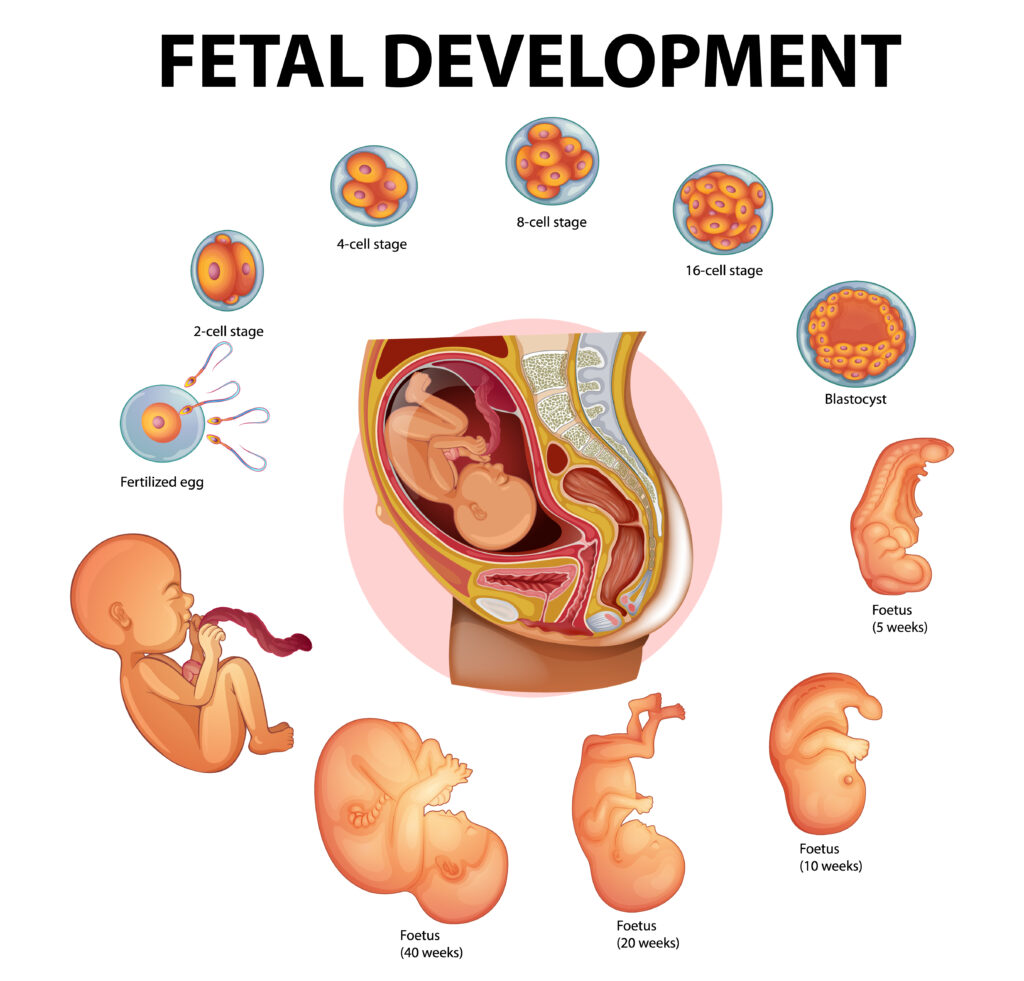Table of Contents
Introduction
Bringing new life into the world is an awe-inspiring journey filled with wonder and complexity. The fetal development in the womb over the course of nine months is a remarkable and intricate process that unfolds step by step. In this article, we will take you on a captivating journey through the various stages of fetal development, exploring the incredible transformation from a single cell to a fully formed human being.
The Miracle of Conception
The journey of life begins at the moment of conception. When a sperm cell from the father successfully fertilizes an egg cell from the mother, a zygote is formed. This marks the beginning of a new life, and the zygote contains all the genetic information necessary for the development of the baby.

The First Trimester of Fetal Development: Formation and Growth
The Formation of Organs
During the first trimester, which spans from conception to approximately 12 weeks, the zygote undergoes rapid division and differentiation. The embryo starts developing vital organs, such as the heart, brain, and spinal cord. By the end of this stage, the embryo is now referred to as a fetus.
Morning Sickness and Hormonal Changes
Pregnancy is accompanied by a surge of hormones, leading to various changes in the mother’s body. Morning sickness, breast tenderness, and fatigue are common symptoms experienced during this trimester.
The Second Trimester of Fetal Development: Rapid Development
Growth Spurt
Between weeks 13 to 27, the fetus experiences a significant growth spurt. The mother starts to feel the baby’s movements, and the baby’s bones begin to harden. At this stage, the baby’s sex can often be determined through ultrasound.
Formation of Senses
The fetus’s sensory organs, such as the eyes and ears, start to develop. The baby can now hear sounds from the outside world and may even respond to familiar voices.
The Third Trimester of Fetal Development: Preparation for Birth
Weight Gain
During the final trimester, from weeks 28 to 40, the baby’s main focus is on gaining weight. The fetus’s lungs mature, and the baby assumes a head-down position in preparation for birth.
The Countdown to Birth
As the due date approaches, the mother may experience Braxton Hicks contractions, which are practice contractions. These are different from true labor contractions but help prepare the uterus for childbirth.
Conclusion
The growth of a baby in the womb for nine months is an extraordinary journey that showcases the complexity and beauty of life. From the moment of conception to the final weeks before birth, each stage is marked by incredible developments and changes. The bond between mother and child deepens as they embark on this miraculous journey together.
FAQs:
Is the nine-month duration of pregnancy always precise?
While nine months is the standard duration of human pregnancy, it can vary slightly from person to person. Some pregnancies may last a little less than nine months, while others may extend beyond.
When can you start feeling the baby’s movements?
Most women start feeling fetal movements, often referred to as “quickening,” between 16 and 25 weeks of pregnancy.
Are there any risks associated with pregnancy?
Pregnancy, like any medical condition, can have risks. It’s important to have regular prenatal check-ups with a healthcare provider to monitor the health of both the mother and the baby.
What is the purpose of amniotic fluid during pregnancy?
Amniotic fluid provides protection and cushioning for the developing baby. It also helps maintain a stable temperature and allows for the baby’s movement.
Can a baby’s gender be accurately determined during pregnancy?
While ultrasound technology has improved accuracy, there is still a small margin of error. Gender determination through ultrasound is most reliable after the 16th week of pregnancy.


